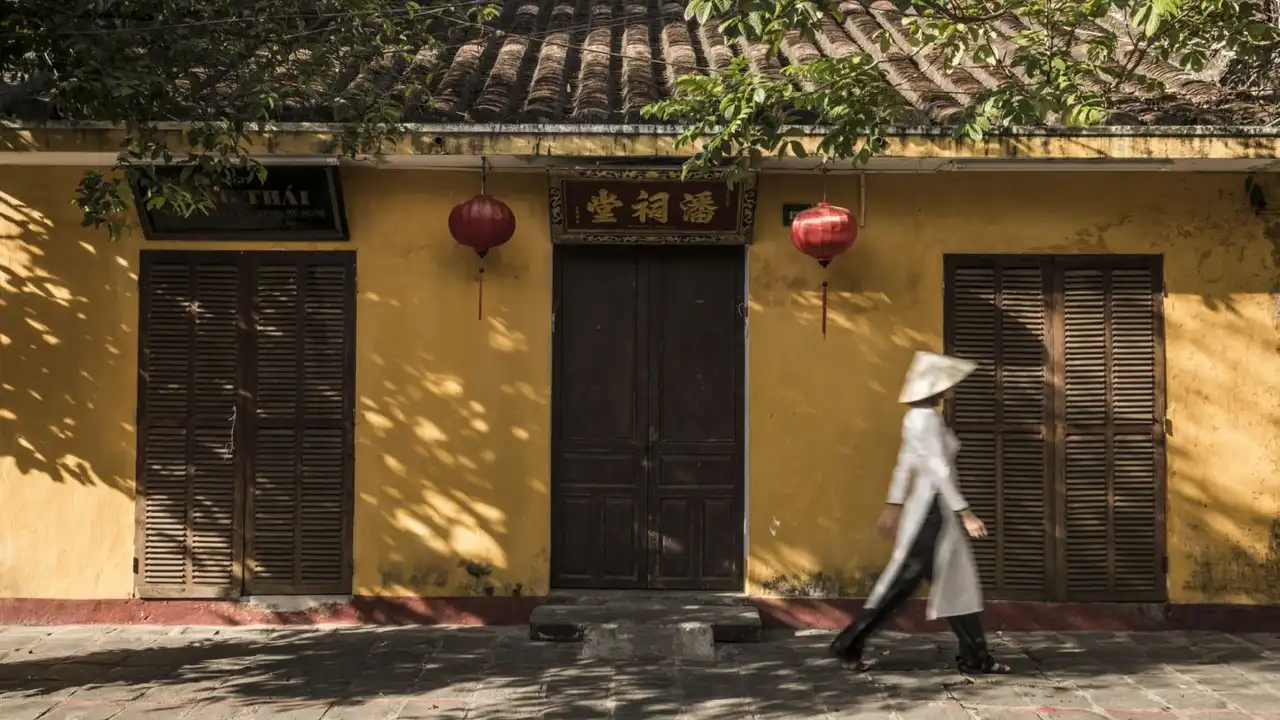5 Southeast Asian Kingdoms That Shaped the Region's History
Uncover the most influential kingdoms that shaped the history of Southeast Asia. Explore their rise and fall.

Introduction: Southeast Asia's Rich Tapestry of Kingdoms
Southeast Asia, a land of vibrant cultures, stunning landscapes, and a history as rich and complex as its famed spices. For centuries, powerful kingdoms rose and fell, leaving behind legacies that continue to shape the region today. Forget the tourist traps for a moment; we're diving deep into the heart of these historical powerhouses. This isn't just a history lesson; it's a journey through time, exploring the political intrigue, artistic achievements, and cultural influences of five kingdoms that truly defined Southeast Asia.
The Khmer Empire: Angkor, Temples, and a Legacy of Power
The Khmer Empire, centered in what is now Cambodia, reigned supreme from the 9th to the 15th centuries. Their most iconic achievement? The magnificent Angkor Wat, a testament to their architectural prowess and religious devotion. But Angkor Wat is just the tip of the iceberg. The Khmer Empire was a sophisticated society with advanced irrigation systems, a complex social hierarchy, and a flourishing arts scene.
Angkor Wat: More Than Just a Temple
Angkor Wat is undoubtedly the star of the show. Originally built as a Hindu temple dedicated to Vishnu, it later transformed into a Buddhist temple. Its intricate carvings, towering spires, and massive scale are simply breathtaking. But beyond its aesthetic beauty, Angkor Wat is a symbol of Khmer power and ingenuity. It's a physical manifestation of their belief system and a testament to their engineering skills.
Khmer Products and Innovations
The Khmer were skilled artisans and engineers. Their advancements in irrigation, particularly the barays (large reservoirs), allowed them to support a large population and cultivate vast rice fields. They also excelled in stone carving, creating intricate bas-reliefs that depict scenes from Hindu epics and Khmer history.
Product Recommendation: Replicas of Khmer carvings are available in many Cambodian markets. While not original, they offer a glimpse into the artistry of the Khmer Empire. Prices vary depending on size and detail, ranging from $20 for small pieces to $200+ for larger, more elaborate carvings. Use them as decorative items in your home to add a touch of Southeast Asian history to your living space. Be mindful of ethical sourcing when purchasing these items.
The Decline of the Khmer Empire
So, what led to the downfall of this mighty empire? Several factors contributed, including internal conflicts, environmental degradation, and external pressures from neighboring kingdoms, particularly the Siamese (Thai). Constant warfare drained resources, and the over-reliance on a complex irrigation system made them vulnerable to droughts and floods. By the 15th century, Angkor was abandoned, and the Khmer Empire faded into history.
Srivijaya: Maritime Powerhouse of the Malay Archipelago
From the 7th to the 13th centuries, the Srivijaya kingdom dominated the maritime trade routes of the Malay Archipelago. Based in Palembang (modern-day Indonesia), Srivijaya controlled the strategic Strait of Malacca, becoming a major hub for trade between India, China, and the rest of Southeast Asia. They were masters of naval warfare and amassed immense wealth through trade and taxes.
Srivijaya's Strategic Importance
The Strait of Malacca was the lifeline of maritime trade, and Srivijaya controlled it. They taxed ships passing through, accumulating vast riches. They also fostered strong diplomatic ties with China and India, further solidifying their position as a regional power.
Srivijaya Products and Trade
Srivijaya traded in a variety of goods, including spices (cloves, nutmeg, and mace), gold, ivory, tin, and timber. They were also known for their shipbuilding skills, constructing large and seaworthy vessels that could navigate the treacherous waters of the archipelago.
Product Recommendation: Indonesian batik, a traditional textile art, has roots that can be traced back to the Srivijaya era. While the exact origins are debated, the influence of trade and cultural exchange during Srivijaya's reign likely contributed to the development of batik techniques. Prices for batik fabric vary greatly depending on the quality and complexity of the design, ranging from $30 for simple prints to $300+ for handcrafted, intricately patterned pieces. Use batik as clothing, wall hangings, or tablecloths to add a touch of Indonesian artistry to your life.
The Fall of Srivijaya
The decline of Srivijaya was gradual. Rivalries with other kingdoms, particularly the Chola dynasty of South India, weakened their control over the Strait of Malacca. Internal conflicts and the rise of new trading centers also contributed to their downfall. By the 13th century, Srivijaya had fragmented into smaller states.
The Kingdom of Pagan: Unifying Burma Under Buddhism
The Kingdom of Pagan, located in present-day Myanmar (Burma), rose to prominence in the 11th century under King Anawrahta. He unified the region under Theravada Buddhism, ushering in a golden age of art, architecture, and religious scholarship. The plains of Bagan are now dotted with thousands of temples and pagodas, a testament to the kingdom's devotion and architectural prowess.
Bagan: A City of Temples
Bagan is simply breathtaking. Thousands of temples and pagodas stretch across the plains, creating a surreal and awe-inspiring landscape. These structures, built over centuries, showcase a variety of architectural styles and reflect the kingdom's deep Buddhist faith.
Pagan Products and Religious Art
The Kingdom of Pagan was renowned for its religious art, particularly its sculptures of the Buddha and its intricate murals that adorned the walls of temples. They also excelled in lacquerware, creating beautiful and durable objects that were used for both religious and domestic purposes.
Product Recommendation: Burmese lacquerware is a beautiful and unique craft that originated in the Pagan period. These items are made from bamboo or wood, coated with layers of lacquer, and then intricately decorated with hand-painted designs. Prices range from $50 for small bowls to $500+ for larger pieces like furniture. Use them as decorative accents in your home or as gifts to share the beauty of Burmese craftsmanship. When purchasing lacquerware, look for pieces made with natural lacquer and sustainable materials.
The Mongol Invasion and the Decline of Pagan
The Kingdom of Pagan faced its demise in the late 13th century with the invasion of the Mongol army. While the Mongols didn't occupy Pagan for long, the invasion weakened the kingdom, leading to its fragmentation into smaller states. The capital was abandoned, and the golden age of Pagan came to an end.
The Ayutthaya Kingdom: Siamese Power and Cultural Flourishing
The Ayutthaya Kingdom, the predecessor to modern-day Thailand, emerged in the 14th century. It became a major power in Southeast Asia, known for its sophisticated administration, flourishing trade, and rich cultural heritage. Ayutthaya was a melting pot of cultures, attracting merchants and diplomats from across Asia and Europe.
Ayutthaya: A Cosmopolitan Capital
Ayutthaya was a bustling and cosmopolitan city, a major trading hub that attracted merchants from China, India, Persia, and Europe. Its strategic location on the Chao Phraya River made it an ideal port for international trade.
Ayutthaya Products and Trade
Ayutthaya traded in a variety of goods, including rice, spices, timber, and precious metals. They also produced high-quality ceramics and textiles that were highly sought after in international markets.
Product Recommendation: Thai silk, renowned for its vibrant colors and intricate patterns, has a long history in Ayutthaya. While modern Thai silk is produced using modern techniques, the tradition of silk weaving dates back centuries. Prices for Thai silk vary depending on the quality and complexity of the weave, ranging from $40 for simple scarves to $400+ for high-end fabrics. Use Thai silk to create elegant clothing, luxurious home decor, or as a beautiful souvenir of your travels.
The Fall of Ayutthaya
The Ayutthaya Kingdom was destroyed in 1767 by the Burmese army. The city was sacked, and its treasures were plundered. The Siamese capital was moved to Bangkok, marking the end of the Ayutthaya period.
The Malacca Sultanate: Islam and Trade in the Malay World
The Malacca Sultanate, founded in the 15th century, played a crucial role in spreading Islam throughout the Malay Archipelago. Located on the strategic Strait of Malacca, Malacca became a major trading center, attracting merchants from across Asia and the Middle East. The Sultanate fostered a vibrant culture, blending Malay traditions with Islamic influences.
Malacca: A Center of Islamic Learning and Trade
Malacca was not only a major trading center but also a hub for Islamic learning. Scholars from across the Muslim world flocked to Malacca, making it a center of intellectual and religious exchange.
Malacca Products and Cultural Influence
Malacca traded in a variety of goods, including spices, textiles, and precious metals. It also played a key role in spreading Islamic culture and traditions throughout the Malay Archipelago. The Malay language, influenced by Arabic and Persian, became the lingua franca of the region.
Product Recommendation: Songket, a luxurious brocade fabric woven with gold or silver threads, has strong associations with the Malacca Sultanate and Malay royalty. While songket is now produced in various Southeast Asian countries, its origins can be traced back to the Malay Peninsula. Prices for songket vary greatly depending on the amount of gold or silver used and the complexity of the design, ranging from $100 for simple scarves to $1000+ for elaborate ceremonial pieces. Use songket to create stunning outfits for special occasions or as a treasured heirloom.
The Portuguese Conquest and the End of the Sultanate
The Malacca Sultanate fell to the Portuguese in 1511. The Portuguese conquest marked the beginning of European colonialism in Southeast Asia and disrupted the established trade routes. While the Sultanate was short-lived, it left a lasting legacy on the culture and history of the Malay world.
:max_bytes(150000):strip_icc()/277019-baked-pork-chops-with-cream-of-mushroom-soup-DDMFS-beauty-4x3-BG-7505-5762b731cf30447d9cbbbbbf387beafa.jpg)





